A Fresh Lens on What we Know
I will admit it – I consider myself a student of Sinek, and a bit of a follower of what Simon teaches. I find that Simon Sinek is able to take powerful approaches and lessons that marry business practice with empathy and share them in a way that is relatable and imprint. His latest offering reinforces his wisdom in both content and approach – and I believe holds an excellent example for associations to consider.
At this moment I see our organizations acting in rapid-response mode – offering in-time virtual learning and updates. These are great examples of the value of an organization to bring together an industry and a membership around key knowledge and practice recommendations. They are also, by and large, one off pieces of content. We take each bite, analyze what we need to apply, share or incorporate it, and move to the next. At some point, this adrenaline-pump-esque learning style will start to have tiring effects. Our brain, our attention, can only work in hyperdrive for so long, hopping from topic to topic, scanning and scanning, before there is drain and lag. Now is the time to start to think about how we ALSO provide a consistency in learning that can balance the fleeting nature of daily updates.
Back to Simon – I imagine that he has some insightful thoughts about society at this moment – about the care of our employees as they are thrust into new, and often trying, circumstances while worrying whether they will be furloughed or their position eliminated. Yet, instead of launching a new book, Simon is offering this:
Instead of a one-off, a live learning series based on his fundamental teaching but through a new light. A few key elements that I think make this the right move in this moment – and that associations can consider:
1. You don’t need to read a new book – Simon’s “How Great Leaders Inspire Action” TED talk – where he discusses starting with why – is the 7th most watched TED talk of all time. Needless to say, that talk in conjunction with the book he wrote, is WELL known. Much like going back and re-watching a movie you have seen many times, there is comfort in already have the foundation of knowledge to engage.
2. Take what we already know, see how it applies to this moment – What Simon is offering is to take this approach that so many have learned, adapted, and adopted and offer a means by which, together, we can take what we know and have mastered and look to how it applies to this unique moment in time. Can we quickly become oriented to new terms and circumstances through one-off learning modules that are coming our way every day? Yes. Will we gain mastery in each of them in just a few days? Not likely. Here is a solid place where many have been practicing for years – and rather than start from scratch we can work through how to shift for maximum impact.
3. Structured, reasonable time frame – This is a 6-week endeavor, the same time each week. This isn’t months long – and if we are still in a state of differentiated work when the 6 weeks are over, there is the possibility to assess and see what is offered next. The consistency of time means it can be blocked out as a weekly reminder/hold. Mid-afternoon accounts for all the U.S. time zones. Again – not a one-off, but a micro-course of consistency.
4. Encourages community (even if virtual) – Though individual participation is welcome; Simon has structured this with the intention of micro-community. Form a book club so you can experience this together. We know human connection in learning makes a powerful experience.
5. Questions before we start – The sessions will be based, at least in part, on questions submitted BEFORE each module. This structure implies that the communities should be communicating beforehand, being able to voice what is top of mind about the material. Simon can then be responsive to those themes that most need to be addressed based on patterns of priority. This is starting from a place that, though he may be the expert on the material, the learners are participating in driving the content.
6. Public access to the conversation – Could Simon sell these recordings? Absolutely. Yet, there is service and wisdom in choosing to have them on a public platform (YouTube in this case) where anyone who will find help with the content can benefit. Yes – I imagine it will bump sales of his book – but it is also easy to forward and share, expanding his audience, and hopefully making a greater shift in society.
As I said, many thoughtful and meaningful structural pieces here. So, for organizations, who is a rock star thought leader that has crafted a seminal work in your organization’s landscape? Something that if they were to do a re-read and lead a learning series on how it applies to what we are facing today, your members would not feel daunted at having to read another long piece of information, but comforted in that they knew the content and could approach it from a fresh point of view? How can you structure the learning not as oration, but as learner-driven in focus so that what is top of mind for those attending drives each lesson? How can you offer this to your broader community – member and non-member alike – demonstrating how your organization is the voice of your industry, and not just the members – building organizational value-awareness and connection to everyone?
It might take a bit of extra focus – but in a world-changing-every-hour moment, a consistency of learning and community from foundational knowledge and inspiration can bring value that our members need.
